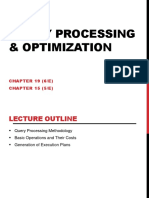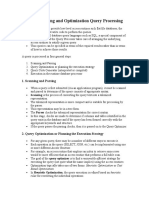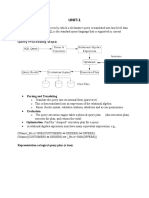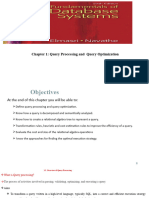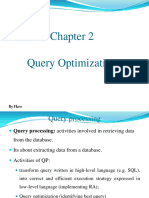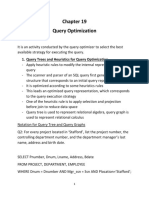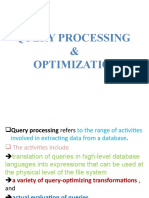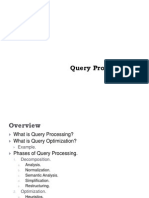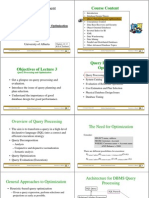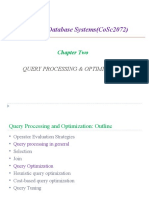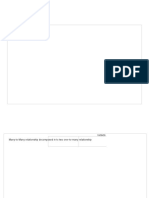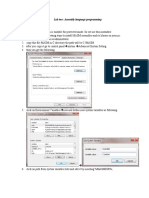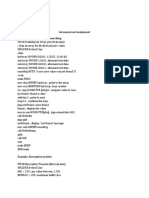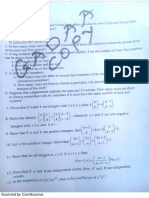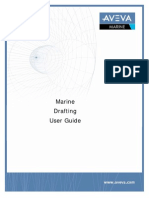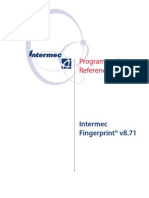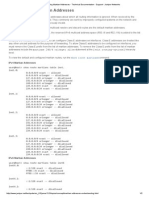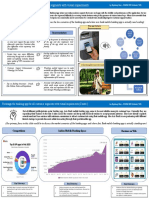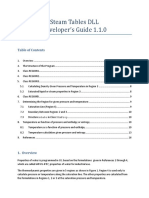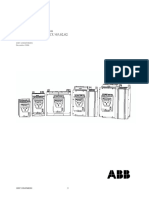0% found this document useful (0 votes)
131 views23 pagesAdvanced Database Management Systems: Query Processing: Chapter 1
This document discusses query processing in advanced database management systems. It covers topics like query parsing, optimization, execution plans, and cost estimation. The optimizer determines efficient execution plans by transforming query expressions and applying rules and heuristics. It considers available indexes, operator implementations, and cost estimates to select low-cost plans. Examples show transforming a sample query through different optimization steps like pushing down selections and projections early.
Uploaded by
Yaikob KebedeCopyright
© © All Rights Reserved
We take content rights seriously. If you suspect this is your content, claim it here.
Available Formats
Download as PPT, PDF, TXT or read online on Scribd
0% found this document useful (0 votes)
131 views23 pagesAdvanced Database Management Systems: Query Processing: Chapter 1
This document discusses query processing in advanced database management systems. It covers topics like query parsing, optimization, execution plans, and cost estimation. The optimizer determines efficient execution plans by transforming query expressions and applying rules and heuristics. It considers available indexes, operator implementations, and cost estimates to select low-cost plans. Examples show transforming a sample query through different optimization steps like pushing down selections and projections early.
Uploaded by
Yaikob KebedeCopyright
© © All Rights Reserved
We take content rights seriously. If you suspect this is your content, claim it here.
Available Formats
Download as PPT, PDF, TXT or read online on Scribd
/ 23
